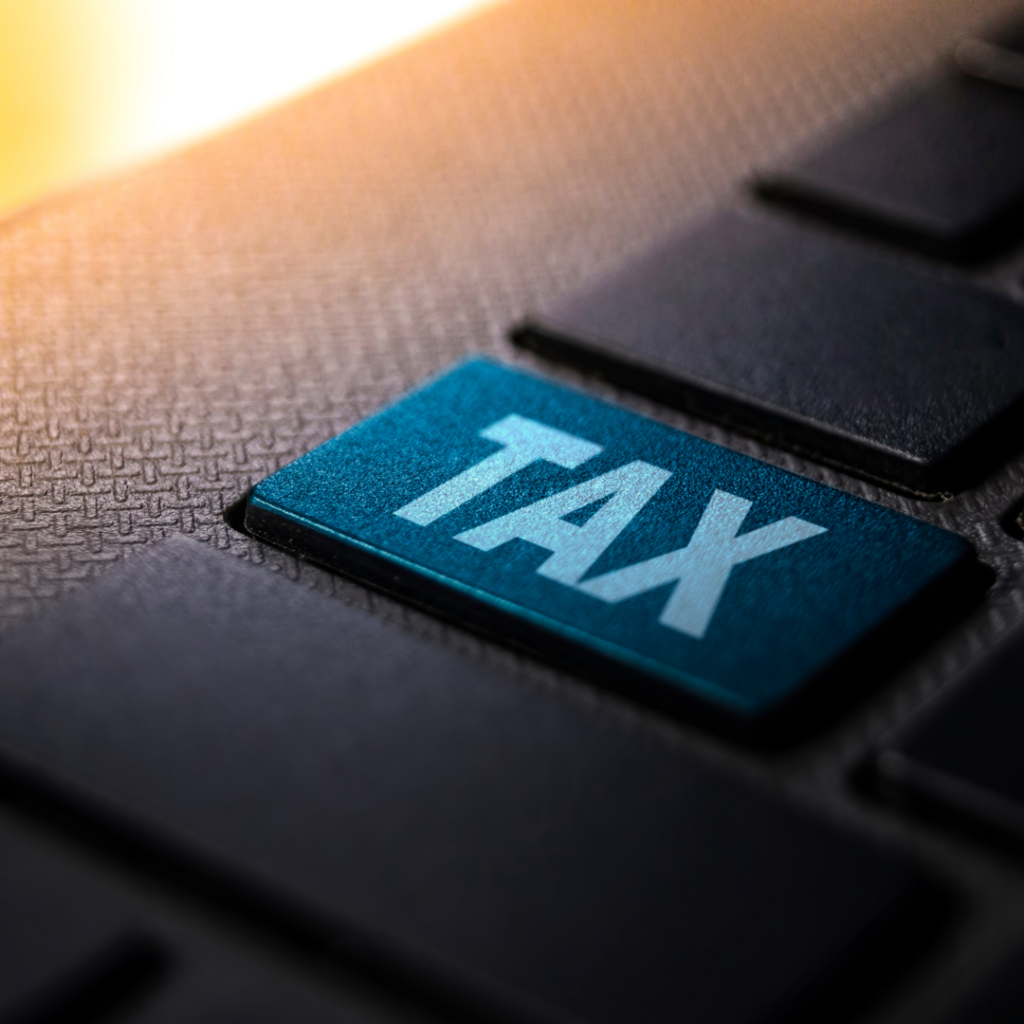Blog Author:
Post Date:

Explore the CIS Reverse Charge, transforming VAT accounting in UK construction since March 1st, 2021. Learn its purpose, conditions, exceptions, and invoicing rules. Whether you’re a contractor or subcontractor, gain essential insights for VAT compliance.

The primary objective of the CIS reverse charge is to combat VAT fraud in the construction sector. It aims to reduce tax evasion and improve compliance within the construction industry by shifting the VAT payment responsibility from subcontractors to contractors.
This method prevents fraudulent activities, such as missing trader fraud, ensuring that VAT is correctly accounted for and paid to HMRC.
The reverse charge should be applied when the following conditions are met:

Included Services |
Excluded Services |
| Construction, alteration, repair, extension, and demolition of buildings/structures. | Drilling for or extracting oil or natural gas. |
| Work on land that forms part of the landscape, including infrastructure projects like roadworks, railways, and waterways. | Mineral extraction and related underground construction activities. |
| Installation of essential systems (heating, lighting, air-conditioning, etc.) in buildings/structures. | Manufacturing and delivery of building/engineering components or machinery. |
| Internal cleaning as part of construction or renovation projects. | Professional services (architects, surveyors, interior/exterior design consultants). |
| Preparation or completion services like site clearance, excavation, foundation work, and landscaping. | Artistic work installations (sculptures, murals) unrelated to construction. |
| Signwriting, signboard erection, and related advertising installations. | |
| Installing non-essential fixtures (seating, blinds, shutters, security systems). |
When issuing invoices under the CIS reverse charge, it’s crucial to adhere to the following guidelines:
Ensure each invoice includes all the standard VAT invoice information.
Make it crystal clear that the CIS reverse charge is in play. This means that the customer, not the supplier, takes responsibility for VAT accounting to HMRC.
Specify the VAT amount or rate applicable under the reverse charge. Importantly, this doesn’t get added to the total charge to the customer.
Your invoices must feature specific wording to signal the application of the reverse charge. Here are some examples:
“Reverse charge: VAT Act 1994 Section 55A applies.”
“Reverse charge: Customer to pay VAT to HMRC.”
“Reverse charge: S55 VATA 94 applies.”
These words are your ticket to ensuring both parties understand their VAT responsibilities and deliver a clear advantage in compliance.
Participants:
Scenario:

Company B invoices Company A for £10,000, stating the CIS reverse charge applies.
Company A, the contractor, records the £10,000 invoice as both input and output VAT.
Company A pays £10,000 to Company B, deducting £2,000 (20%) for CIS.
Company A remits the £2,000 CIS deduction to HMRC.
Company B reports the payment from Company A but doesn’t charge VAT.
This demonstrates how the CIS reverse charge shifts VAT responsibility to the contractor, ensuring proper tax compliance in construction projects.
The introduction of the domestic reverse charge necessitates specific adjustments in your VAT return filing:
When applying the domestic reverse charge to your sales, these should be recorded in box 6 of your VAT Return, indicating the value of the sales excluding VAT. There’s no need to enter anything in box 1 for these sales, as VAT accounting for them is the buyer’s responsibility.
If you are purchasing services under the reverse charge as a contractor, you need to account for the VAT differently:
As always, seeking guidance from a qualified accountant or tax professional is advisable. They can provide tailored advice and ensure your VAT Returns comply with HMRC regulations.
Need help with this?
Call us on 01617 985789
Or book a meeting at https://calendly.com/d/ckfd-tzk-zbb

Taxman knocking? And not knocking quietly? Here’s how to handle an HMRC investigation:
Ever had that sinking feeling when a brown envelope with ‘HMRC’ stamped on it lands on your doormat?
It’s a similar feeling to how I feel when Man City are 2-0 up at half-time and then the opponents score a hat-trick in the second half. It’s that same stomach sinking feeling.
Now, you know you should open that HMRC envelope. You also know it’s not a surprise tax rebate. Best-case scenario, it’s a change in an employee’s tax code. Worst case? You’re being investigated. That feeling of dread is justified.
So, what do you do if HMRC is on your case and asking uncomfortable questions? I’ve helped clients across the construction, property, and hospitality sectors handle this, and while every case is different, the advice is always the same. Let me take you through it.
Understand why they’re here
Before sending a panicked email that doesn’t make sense, or trying to explain yourself over the phone, stop and try to work out exactly why you’ve attracted HMRC’s attention.
Once you know, you can start planning your response. Being upfront with me at this stage is key. If you try to brush things under the rug, whether with me or HMRC, it could get messy. And fast.
Maybe you already know why they’re sniffing around. If so, don’t ignore it. Delaying only makes things worse. I’ve seen cases go all the way to court, and believe me, it’s no picnic. Stressful doesn’t even begin to cover it.
Once you know what’s triggered the HMRC investigation, you’re in a stronger position to deal with it properly.
Be cooperative
No one enjoys feeling like they’re being interrogated. But you’ll get nowhere being defensive or evasive.
HMRC inspectors want answers. Give them what they ask for, honestly and promptly. That includes emails, invoices, receipts, payroll info, VAT records, your dog’s birth certificate (wouldn’t be surprised)… anything they’ve requested.
Now, if I can demonstrate that you’ve been fully cooperative, it can actually work in your favour. The more helpful you are, the less friction is involved. As your accountant, If I can show that you have been cooperative, this could reduce any penalties that the tax man wants to make you pay and make it a smoother process.
Seek professional help
If you’re feeling out of your depth, don’t try to wing it. Get someone in your corner who knows how to handle HMRC investigations. That would be me.
As a tax advisor with experience supporting businesses in construction, property, and hospitality, I can help you:
I can also be your shoulder to lean on when things feel a bit much. Let’s be honest, sometimes you just need someone to reassure you it’s going to be alright.
Pick your accountant carefully. Make sure they’re up to date with current tax regulations (CIS, VAT reverse charge, especially if you’re in construction), and that they’ll actually pick up the phone when you call.
Proactive measures to avoid investigations
Want to avoid HMRC knocking at your door altogether? Simple: stay on top form.
Here’s how:
This is where having an accountant that’s switched-on helps. I keep tabs on the latest updates so you don’t have to.
Additional tips:
By following these tips, you can increase your chances of firstly avoiding a HMRC investigation in the first place and then getting a successful outcome.
Interested to find out more?
Call us on 01617 985789
Or book a meeting at https://calendly.com/d/ckfd-tzk-zbb

You’ve probably been hearing about Making Tax Digital (MTD) for the past couple of years now. Maybe you’ve buried your head in the sand a bit, hoping it might all blow over. If that’s the case, I’ve got some bad news for you, it hasn’t. It’s not going anywhere and it’s changing the way businesses keep their records and submit tax returns.
There is a but. As a business owner you’ll know what I mean when I say like most things, once you’ve got the right set up, it’s manageable. It’s the same for everything.
In one of my previous articles I’ve gone through everything you need to know about MTD, and what it’ll cost you if you don’t. But this time it’s all about why you need proper MTD-compatible software and what your options are, especially if you’re in construction, property, hospitality, or you’re a self-employed doctor or dentist.
Let’s just touch on the basics. MTD is HMRC’s plan to make the UK tax system more efficient and easier for taxpayers to get right.
Basically, no more stuffing receipts in a folder or filling out a spreadsheet once or twice a year. Instead what you’ll need to do is:
MTD for Income Tax Self Assessment (ITSA) is coming in April 2026 for self-employed people and landlords earning over £50,000 a year, and in April 2027 for those earning over £30,000. That’s tomorrow in tax terms.
So, if you’re still manually keying things in at year-end or passing your accountant a wad of receipts, it’s time to upgrade.
The thing is MTD isn’t just about doing things online. You need to use approved, compatible software that talks to HMRC’s systems.
Take it from me, the sooner you switch, the smoother your tax life becomes.
The right software will:
You can forget about using your personal bank account and hoping for the best. Now you need to get a proper business bank account that feeds directly into your accounting software. It keeps everything clean and makes both your life and mine (and HMRC’s) ten times easier.
Not all software is the same. Some are more complicated than they need to be, some are overpriced and some of them just aren’t fit for purpose.
Here are a couple we regularly recommend to our clients:
If you’re with NatWest, Royal Bank of Scotland and others, you may already have FreeAgent included as part of your account. That’s a win.
It’s a solid MTD-compliant platform, with:
Great for small business owners, freelancers, and contractors who want to keep things simple but compliant.
LimeBooks is a newer option but a great one. It’s low-cost, easy to navigate, and fully HMRC-approved for MTD VAT and Income Tax.
We like it for:
It’s ideal if you’re self-employed, especially in construction or property where margins are tight and you don’t want to pay for bells and whistles you’ll never use.
If you’re already using something else, it’s not a problem. Maybe you already use software like QuickBooks or some other setups, and that’s fine. We’re not here to force you to switch if what you’ve got works.
The main thing is that it’s MTD-compliant and helps keep your records accurate. If you’re managing your own books and it’s all ticking along nicely, we’ll support that.
I’m no software snob, I’m just here to make sure you’re compliant and not heading towards a nasty fine from HMRC.
Whether you’re running a hospitality venue, managing property portfolios, overseeing a building site, or running your own dental practice – MTD applies. The admin might look a bit different, but the rules don’t change.
Construction: You’ll likely need MTD-compatible software that can handle CIS deductions, VAT reverse charges, and project-specific costs. FreeAgent or QuickBooks are good for this.
Property: Landlords need to track rental income, repairs, and mortgage interest. MTD for ITSA will apply from 2026 if your property income is above £50k.
Hospitality: Pubs, restaurants, hotels, you’ve got VAT, tips, staff wages, and stock. Integrated POS systems and a good bookkeeping platform can save you hours.
Self-Employed Doctors/Dentists: You’ve got a mix of NHS and private income, and likely a combination of bank accounts and payment processors. MTD-compliant software brings it all into one place. And keeps you from getting overwhelmed at tax return time.
Don’t wait for HMRC to send you a reminder. MTD isn’t going away, and the fines for non-compliance won’t be friendly. Trust me.
Set yourself up with:
Not sure which software is best for you? I can talk you through the pros and cons over a brew, help get you set up, and keep you on track all year, not just at tax time.
Interested to find out more?
Call us on 01617 985789
Or book a meeting at https://calendly.com/d/ckfd-tzk-zbb

If someone asked you right now how your business is doing, what would you say? In my experience, most business owners give a casual response about it being good and that’s that. After all, isn’t that what you are meant to say at a networking event? But if you were asked to prove why, would you know what to say? I’m talking about a proper explanation that can be backed up with up-to-date figures. Not just a gut feeling or guess.
This happened to me recently with my business coach. I was asked how things were going, and in true Graeme style I gave the usual line “yeah, everything’s good”. But then I was asked about my margin. I realised I didn’t know my figures, and I couldn’t back it up. I knew I was going to get a bit of a telling off, it’s exactly the sort of conversations I often have with my clients. Except this time it was me with the ‘oh sh*t’ expression on my face.
Whether you’re in construction, property development, or hospitality, you’ve probably had moments where you think things are going well, but deep down you know you’re just assuming. Just because you’ve got a fully booked restaurant or a few big jobs lined up and the bank account is looking half decent, it doesn’t always mean that your business is fine.
It doesn’t matter whether you run a chain of restaurants or a small building firm. You need to understand what your books are telling you. That means more than just a quick butchers at your bank balance or checking if payroll has gone out. It means knowing your income, costs, margins, cash flow, and upcoming outgoings.
The truth is, many business owners get caught up in the day-to-day. You’re managing staff, back and forth with clients, ordering in the stock or materials, and firefighting as problems arise. Before you know it, a few months have passed and you’ve not looked at your accounts properly. You don’t have a clue if that big invoice has been paid. You’re not sure which suppliers are overdue. And you definitely haven’t compared your actual profit to what you expected this quarter.
Running your business without understanding the financial side of things is like trying to build a house without the floor plans. You might get something that looks right, but underneath, it’s not sound.
One of my clients, a Manchester-based construction business, came to me after they hit a brick wall with cash flow. On paper, it all looked good. Plenty of jobs booked, staff on site, and invoices being raised. But when we took a closer look, we found just over £20,000 in unpaid invoices going back five months. Worse still, they’d taken on a new job that needed a lump sum paid upfront, without checking whether they could actually afford it.
There was no foul play or bad intentions. They were just busy and didn’t have a proper bookkeeping system in place to keep track of what was coming in, going out, and what was overdue. Nothing that a bit of structure and some regular reporting couldn’t sort out. Within a few months, I helped them back on top of their cash flow and better still, they knew exactly what each job was bringing in.
To keep your business running smoothly and make better decisions, there are a few key things you need to know at all times:
These are the basics. You don’t need a finance degree to understand them, but you do need systems in place to track them. Whether that’s decent accounting software or an experienced accountant who specialises in your industry. I can help with setting you up with the right software for your business, or if you need someone to look after your accounts month in month out, I can be that too.
Here are a few steps you can start straight away to get more control over your business:
Understanding your books isn’t about ticking boxes or staying on the right side of your accountant. It’s about putting yourself in control. When you know your margins, your costs, your forecasted income and your biggest risk areas, you can make better and more confident business decisions. Want to take on a new member of staff? Thinking of opening another venue or investing in new equipment? Your accounts will soon let you know whether you should, don’t rely on just a gut feeling.
It also gives you the peace of mind that you’re not just working hard, but working smart. Plenty of businesses look busy on the outside but are quietly leaking cash in the background. When you understand your finances, you avoid that.
If you’re a business owner in construction, property development, or hospitality, and you’re ready to stop blagging your way through the finances, let’s get it sorted properly.
I’ve got decades of experience in these areas, and I’m definitely a lot better at keeping on top of my clients’ books than my own. I’ll help you set up the right software, create simple dashboards and run regular reports. Most importantly, I’ll help make it easier to keep on top of your business and confidently answer what would normally be uncomfortable business questions.
We can have a brew, go through where you’re at, and get your business set up to run the right way.
Share
Partner with us and discover how our tailored accounting solutions can maximize your profits and minimize your taxes in the property industry.
Take the first step towards Financial Freedom, today.
Copyright © 2023 Cloud Accountancy UK | All Rights Reserved | Privacy | Terms and Conditions
Developed by Gecho Agency